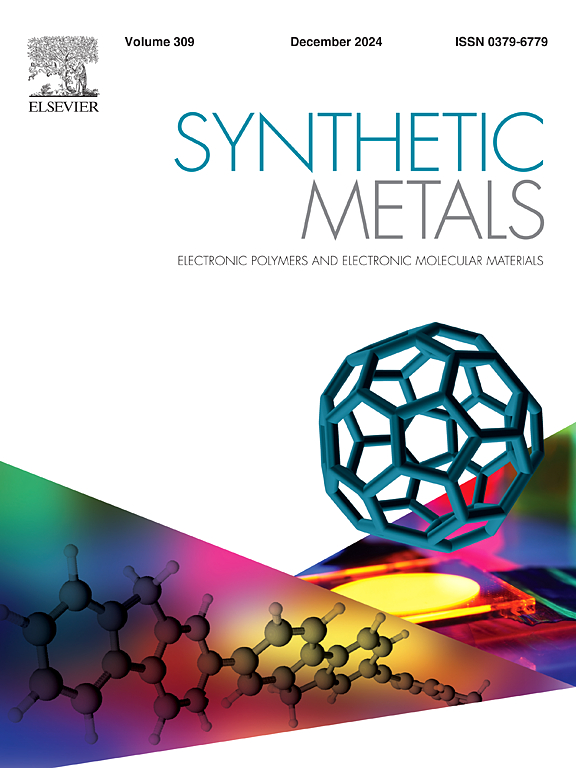The influence of surface defects in SnO2 thin films prepared from different alcohol solvents on electron transport in polymer solar cells
IF 4.6
3区 材料科学
Q2 MATERIALS SCIENCE, MULTIDISCIPLINARY
引用次数: 0
Abstract
The study demonstrates the influence of surface defects in tin dioxide (SnO2) thin films, formed by synthesis from different alcoholic solvents, on efficiency of a polymer solar cell. The influence of the boiling point of alcohol solvents on the surface properties and the quality of the boundary interface of SnO2 films was established. It is shown that the optical bandgap width and Urbach energy depend on the defectiveness of the SnO2 thin films prepared from different alcoholic solvents. According to EDX data, all prepared films exhibit better stoichiometry. It has been established that the luminescence spectra of the films are associated with the formation of three emission centers, formed by defects such as interstitial tin or oxygen vacancies. Raman spectroscopy measurements of the films indicate the presence of oxygen vacancies, with their surface concentration depending on the type of alcohol solvent used in the synthesis. It is shown that in organic solar cells, the defectiveness of the SnO2 film structure significantly affects the density of injected electrons in SnO2. It is demonstrated that in SnO2 films synthesized using butanol, the lower concentration of surface defects reduces electron-hole recombination at the PTB7-TH:ITIC/SnO2 interface, resulting in an increase in the values of the OSC current-voltage characteristics.
不同醇溶剂制备的SnO2薄膜表面缺陷对聚合物太阳能电池电子输运的影响
研究了不同酒精溶剂合成的二氧化锡(SnO2)薄膜表面缺陷对聚合物太阳能电池效率的影响。研究了酒精溶剂的沸点对SnO2薄膜表面性能和界面质量的影响。结果表明,不同醇溶剂制备的SnO2薄膜的光学带隙宽度和乌尔巴赫能与薄膜的缺陷有关。根据EDX数据,所有制备的薄膜都表现出更好的化学计量。研究表明,薄膜的发光光谱与三个发射中心的形成有关,这些发射中心是由间隙锡或氧空位等缺陷形成的。薄膜的拉曼光谱测量表明存在氧空位,其表面浓度取决于合成中使用的酒精溶剂的类型。结果表明,在有机太阳能电池中,SnO2薄膜结构的缺陷显著影响SnO2中注入电子的密度。结果表明,在丁醇合成的SnO2薄膜中,较低的表面缺陷浓度减少了PTB7-TH:ITIC/SnO2界面上的电子-空穴复合,导致OSC电流-电压特性值增加。
本文章由计算机程序翻译,如有差异,请以英文原文为准。
求助全文
约1分钟内获得全文
求助全文
来源期刊

Synthetic Metals
工程技术-材料科学:综合
CiteScore
8.30
自引率
4.50%
发文量
189
审稿时长
33 days
期刊介绍:
This journal is an international medium for the rapid publication of original research papers, short communications and subject reviews dealing with research on and applications of electronic polymers and electronic molecular materials including novel carbon architectures. These functional materials have the properties of metals, semiconductors or magnets and are distinguishable from elemental and alloy/binary metals, semiconductors and magnets.
 求助内容:
求助内容: 应助结果提醒方式:
应助结果提醒方式:


